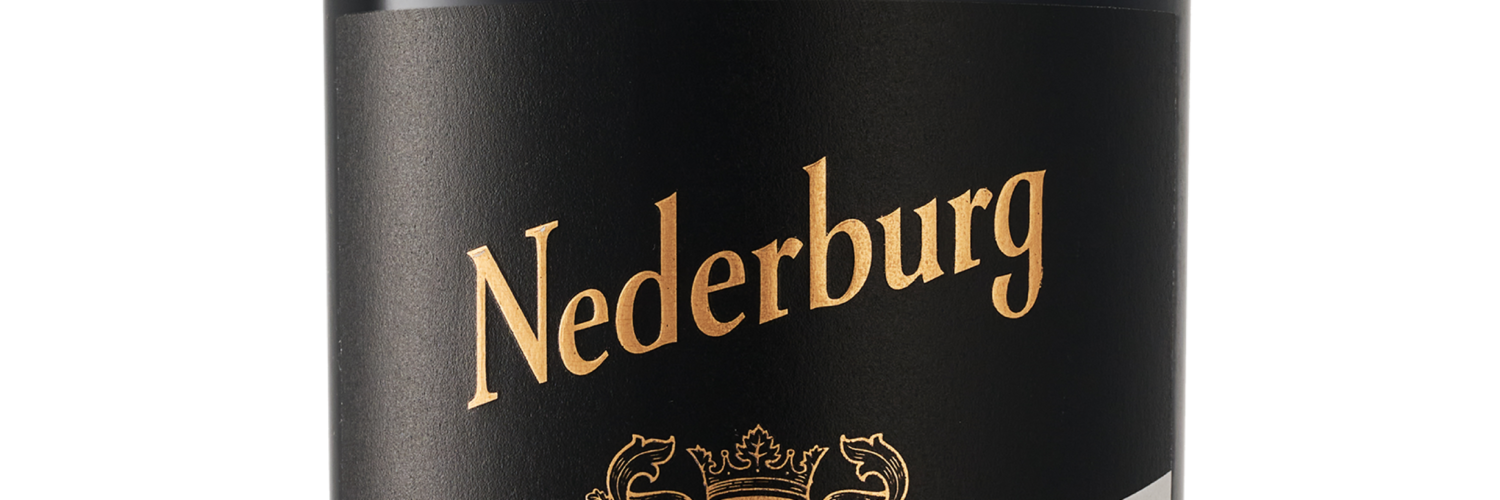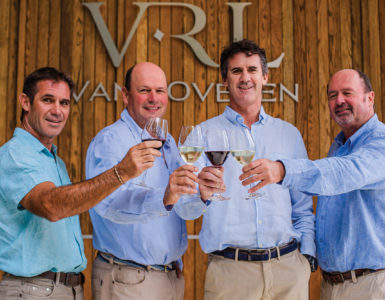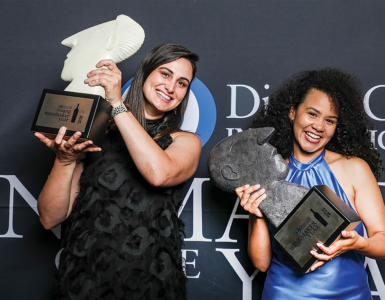ANNIVESARY: Loved as much for its satisfying taste as its consistency of style and quality, the wine recently scored an impressive 91 points out of 100 at the Trophy Wine Show 2023…
By Emile Joubert
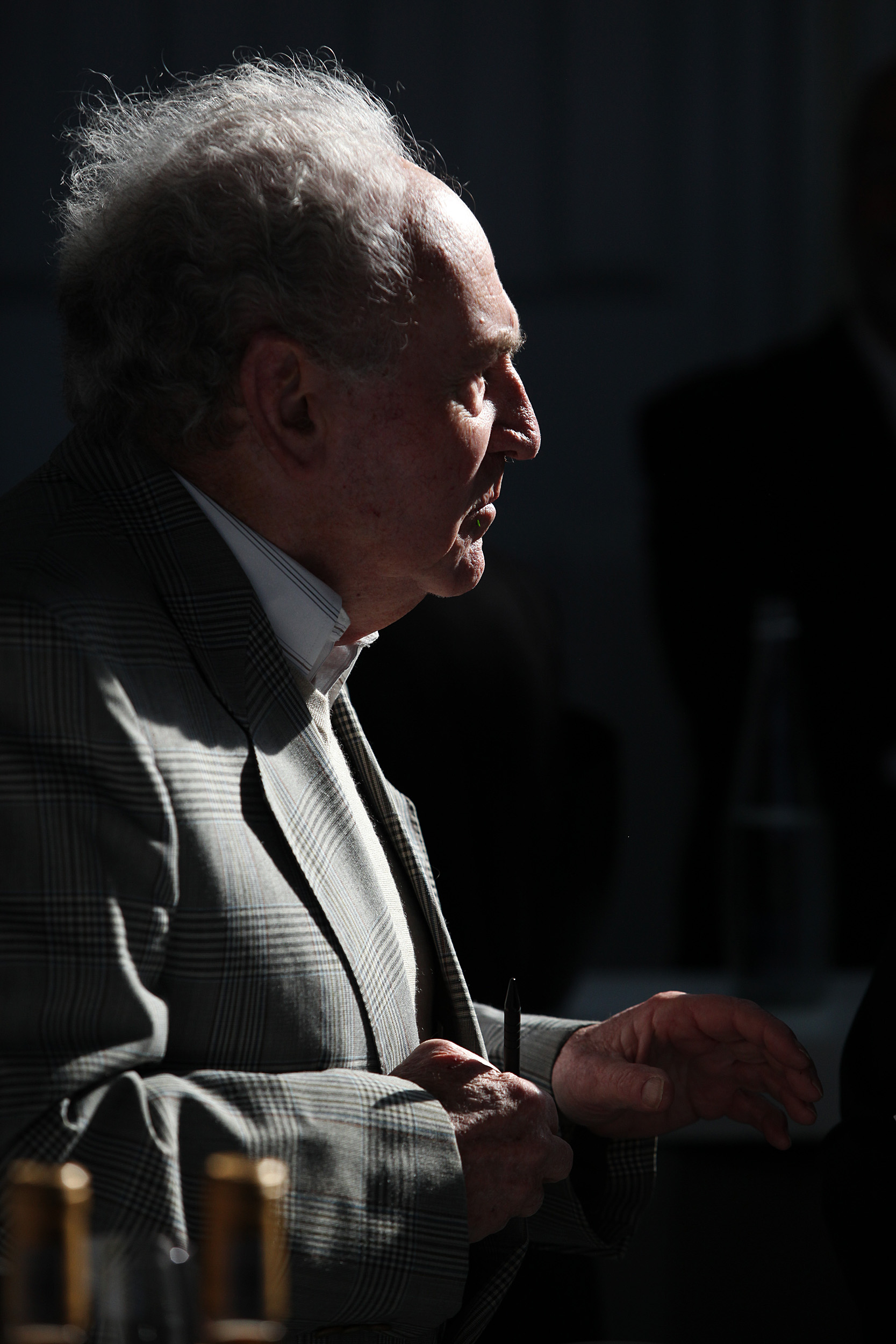
A 50-YEAR LEGACY OF NOBLE QUALITY
At the time of its introduction to the South African wine market in 1973, Nederburg’s now legendary Baronne red wine was far more of a pioneer than it might receive recognition for today. One of the major reasons for this is that in the late 1960s and early 1970s the local wine landscape was vastly different to what it is today, and by launching Baronne, Nederburg sailed into waters that were to a large extent uncharted.
The primary motivation for Nederburg’s legendary cellarmaster at that time, Günter Brözel, to inspire the wine that was to become Baronne was the status of the local wine market. Half a century ago South Africa experienced a shortage of red wine as local consumers had, almost overnight, developed a liking and need for dry red wine. Reasons for this are, 50 years later, still unfathomable. But it as if the wine drinkers of that time were looking for an alternative to the fortified, sweet and quirky white wines the industry had been offering them since the mid-1900s.
Cape wine farms specialising in making dry red wines suddenly found they simply could not keep up with demand. Cars were literally queuing outside their gates for a case or three of red, and in some instances farm owners had to limit each customer to the number of bottles they were permitted to buy.
This sudden demand for red wine in the 1970s was exacerbated by the fact that in those years the South African vineyard landscape was vastly different in terms of grape cultivars planted than what the situation is today. In 1973 over 80% of the 112 000ha under vine in the Cape winelands was planted to white grape varieties. It is thus a simple equation to make that even the briefest increase in demand for red wine would under these circumstances result in a major shortage.
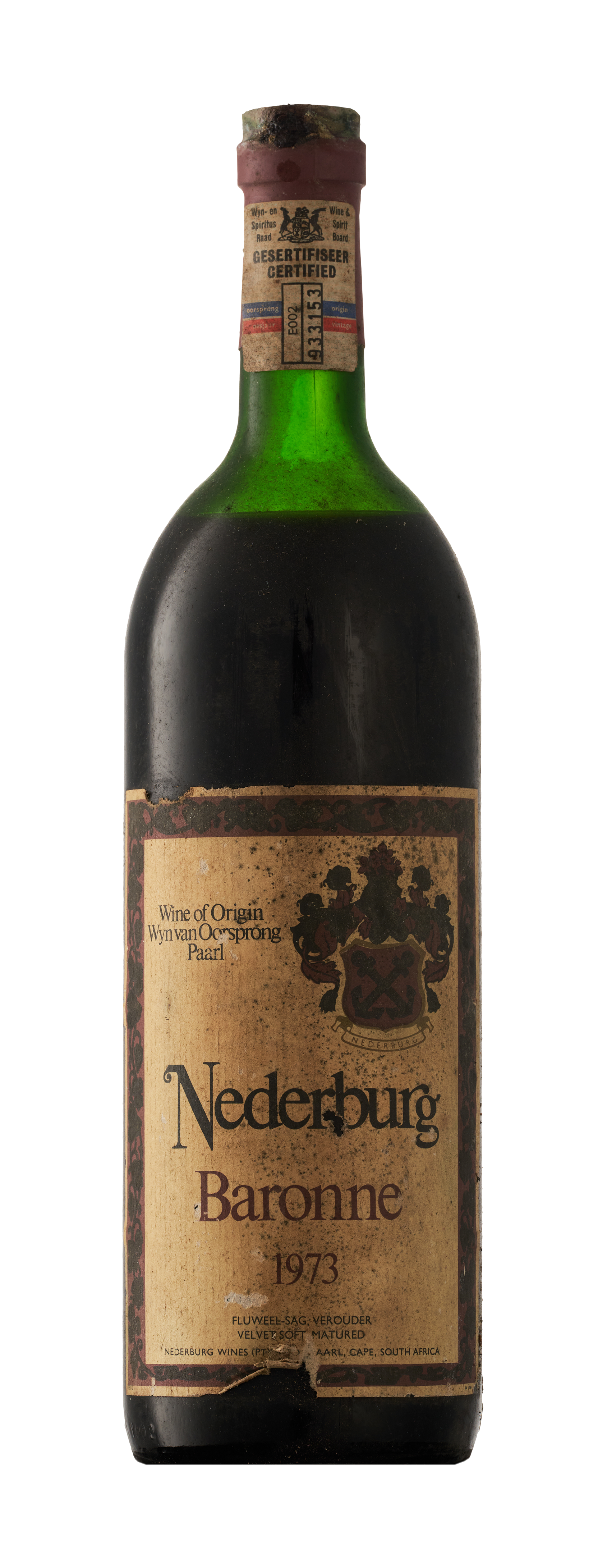
BARONNE:
A 50-YEAR LEGACY
OF NOBLE QUALITY
In terms of choosing the right time to launch a new red wine into the market, as was the case with the Nederburg Baronne, one could thus say that Nederburg could not have picked a better time.
Yet Brözel and his team were not simply going to make and bottle a dry red wine. From the outset Baronne was designed, as it were, to offer the red wine drinker an element that was in scarce supply from other South African red wines, namely instantly enjoyable drinkability. It is today a recognised fact that, like many red wines produced in other parts of the world, the cellar technology and grape quality of those days resulted in wines with formidable tannins and hard edges that were only removed once the wine has calmed down in the bottle for five years or more.
Baronne was not to be such a wine. Noble and classic, yes. Yet a wine providing accessible and enjoyable quality from day one.
With Baronne having to carry a certain degree of regal nobility, Brözel was going to use the Bordeaux variety of Cabernet Sauvignon, a cultivar from which in 1973 he was already making two single varietal Cabernet bottlings under the Nederburg label. The challenge, though, was finding Cabernet Sauvignon – in 1973 only 2% of South Africa’s land under vine was planted to this grape. As was the case concerning local wine drinkers need for red wine, the demand for Cabernet Sauvignon grapes from winemakers far exceeded the supply. Fortunately Nederburg had secured access to some premium Cabernet Sauvignon vineyards in the Cape, proving foresight to also be a key ingredient in winemaking.
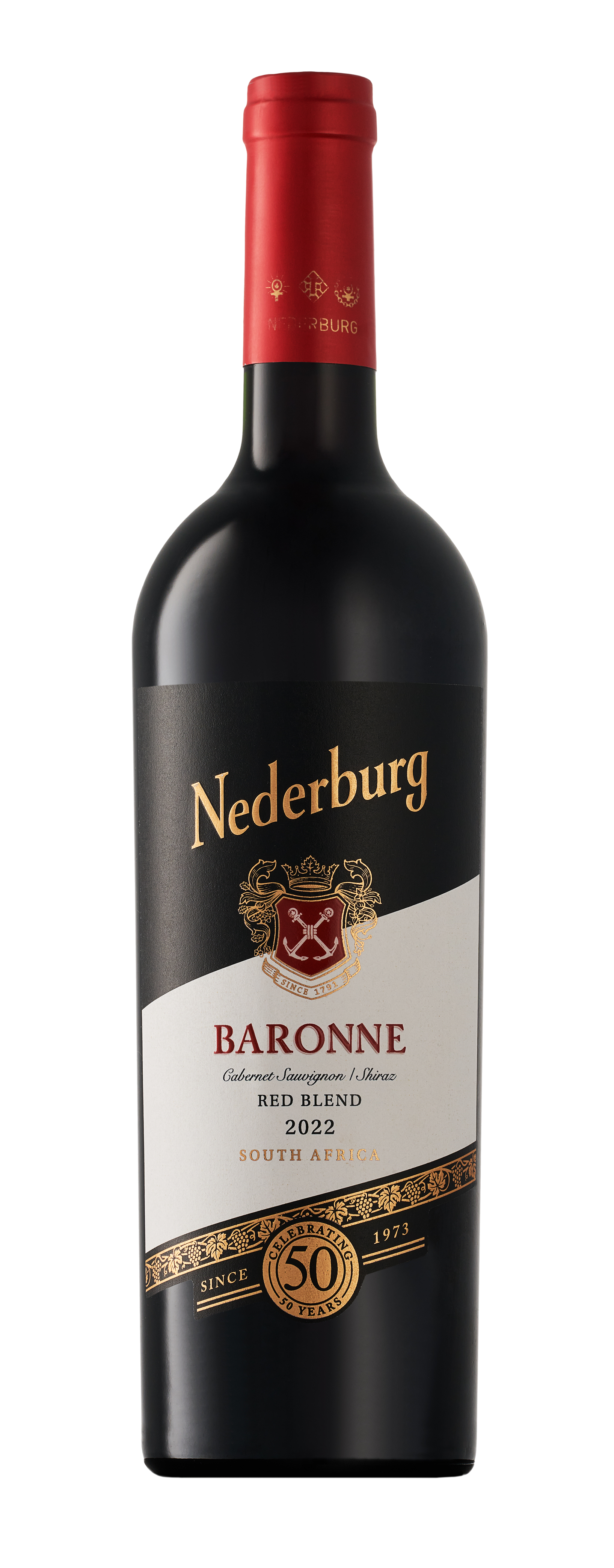
A 50-YEAR LEGACY OF NOBLE QUALITY
To introduce an element of plushness to the wine, this being an evocative spicy warmth to lift the firm regal backbone which the Cabernet Sauvignon is famous for, Brözel decided that Baronne would contain an element of Shiraz, the famous Rhône variety. But if Cabernet Sauvignon grapes were scarce in 1973, Shiraz was almost nowhere – official industry records from that year do not even list Shiraz among the cultivars growing at the Cape, throwing in the little Shiraz there was among the small percentage innocuously named “other cultivars”.
Cabernet Sauvignon would always lead the way in Baronne, with Shiraz maintaining a lesser yet non-negotiable role. And since the very first years of Baronne, one or two other red varieties would find their way into the final blend, just to round things off. For this, the winemaker has the sole discretion.
Brözel’s credo was that Baronne would never be a wine of high alcohol or hard extraction that would lead to the aforementioned tough tannins. Just a “continuously renewable style of quality and perception”.
Besides acumen in the Nederburg cellar, the style and quality of Baronne was to a large extent determined by the quality of the grapes used in making the wine. South Africa’s Wine of Origin system, also introduced in 1973, had parcelled the Cape winelands into various regions of discernible terroir to act as a guide in Brözel’s and other winemakers’ pursuit of good fruit. In identifying vineyards for the making of Baronne, great effort went into avoiding vines infected by leaf-roll virus. This had a profound impact on the purity and drinkability of Baronne, as grapes born from leaf-roll infected plants result in gritty tannins which would hamper the stylistic vision Nederburg had for this wine.
As to the crucial element of wood maturation any fine red wine requires, Nederburg could scarcely have wished for a better hand than Brözel’s to nurture the wine to finality. Brözel’s father was a barrel-maker in Germany and the winemaker had himself trained under Brözel senior, from an early age accompanying his father to the oak forests of Germany to learn to identify wood at its source, as well as becoming immersed in all aspects of stave-making, the seasoning of green wood, charring and the cobbling together of the staves into a barrel.
However, back in 1973 hardly any South African wineries were using the 225l barrique barrels that are today so synonymous with red winemaking. The huge foudré vessels of old wood, capable of holding thousands of litres of wine, were used to age the fermented Baronne red blend into a state of evocative red wine expression. This use of older, bigger barrels providing a gentler degree of the wine’s exposure to wood is today still one of the core elements of this great Nederburg blend.
In selecting the name for the wine, Brözel led the way through his belief that Baronne, although a modestly priced wine made for everyday enjoyment, would bear a noble name that would further enhance the Nederburg brand and its reputation as one of South Africa – and the world’s – leading wineries.
Although not a Bordeaux-style red blend, this wine was to nod in the direction of France’s greatest wine region – in status as well as it being built on Cabernet Sauvignon, the magnificent grape of Bordeaux. And here the three waterways in the region of Bordeaux came into play: the Gironde estuary splitting into the Garonne and Dordogne rivers. The sound of these three names, ending with an “onne” lead to Brözel and the marketers reaching for the most “noble of the noble” which is a “baronne” – a lady who owns land given her by the King. Like the word “baron”, this implies status and nobility, but the feminine “baronne” offers an element of grace and refined charm not found in the male version of this name.
The instant success of Nederburg’s Baronne in the market-place, which is still very much evident today, can be ascribed to the style on which the wine was founded 50 years ago, as well as a consistent commitment over the decade to express this style through non-negotiable quality.
The status of Nederburg, along with the association of nobility implied by its name, ensured from the outset that it would be a wine to be noticed. And once the wine had found its way into the glass and the enjoyment it offered was experienced, Baronne became an integral part of a lover of red wine’s everyday life.
No big-budget advertising campaigns were pursued. No bells and whistles in forcing the wine to get noticed. Sheer quality and the brand’s perception of being a path to classic red wine enjoyment paved the way to its success, which half a century after that first glass was poured remains firmly intact.
Events
RICKETY BRIDGE EXPERIENCE
Rickety Bridge winery will be hosting a wine blending experience in Midrand, north of Johannesburg, tomorrow afternoon.
The experience is taking place at the City Lodge Hotel in Waterfall from 3pm to 6pm. Guests will also have the opportunities the finest reds from the Franschhoek farm. Dress code? A touch of red or anything you prefer. The winery will also have a special announcement to make – have a look at the farm when you get a chance.
The host, Ms Andulelela Suka from Rickety Bridge, is looking forward to receiving the guests for the experience.
CAROLINE’S SHOWCASE
Caroline’s Red Wine Review is ready to unveil a treasure trove of the Cape’s most celebrated wines at a special tasting taking place at The Lookout, Granger Bay Boulevard, V & A Waterfront on July 27.
One of the most coveted tasting events on the South African wine calendar, the tasting is presented by Cape Town’s legendary Caroline Rillema. This world-class annual showcase gives wine enthusiasts the rare opportunity to discover and taste the Cape’s best flagship red wines. Only 90 accolade-achieving winemakers are invited to present just one wine – their best of the best – on the evening. “We are delighted to bring the Cape’s finest producers of red wines together once again, giving lovers of fine wines the incredible opportunity to taste, meet and engage with the passionate people behind these phenomenal labels,” says Rillema. Tickets cost R450 a person via Quicket.
CWG TASTINGS
The countdown to the annual Nedbank Cape Winemakers Guild (CWG) Auction has started, with ticket sales for pre-auction events now available for purchase.
The CWG will be hosting two showcases – in Cape Town and Johannesburg – in August. At these tasting events, wine lovers will sample the 2023 auction wines while interacting with the winemakers. Also available for tasting will be past auction wines and flagship wines from guild Members. The showcase will feature a silent auction of past CWG and flagship wines to raise funds for the Guild’s Protégé Programme.
Tickets cost from R500 on Quicket for the August 24 Cape Town showcase; and the August 30 Johannesburg chapter.
WINTER WARMERS FEST
The Muratie Flavours of Winter Festival invites wine lovers to head out to Stellenbosch for a mellow fireside celebration of Cape “Port” and fortified style wines tomorrow.
The Muratie Farm Kitchen will be serving a delicious array of traditional & rustic meals suited to the wintertime. The evening at one of the Cape’s oldest wineries will start with a glass of a luscious fortified wine to warm the cockles of your heart, with live music in the background and some warm treats to enjoy.
The evening will be warmly hosted by the winemakers from Muratie, Allesverloren, Axe Hill, Delaire Graff, Boplaas, The Fledge and Peter Bayly. Tickets cost R195 (children free). Due to limited space, book in advance (021) 865 2330.

